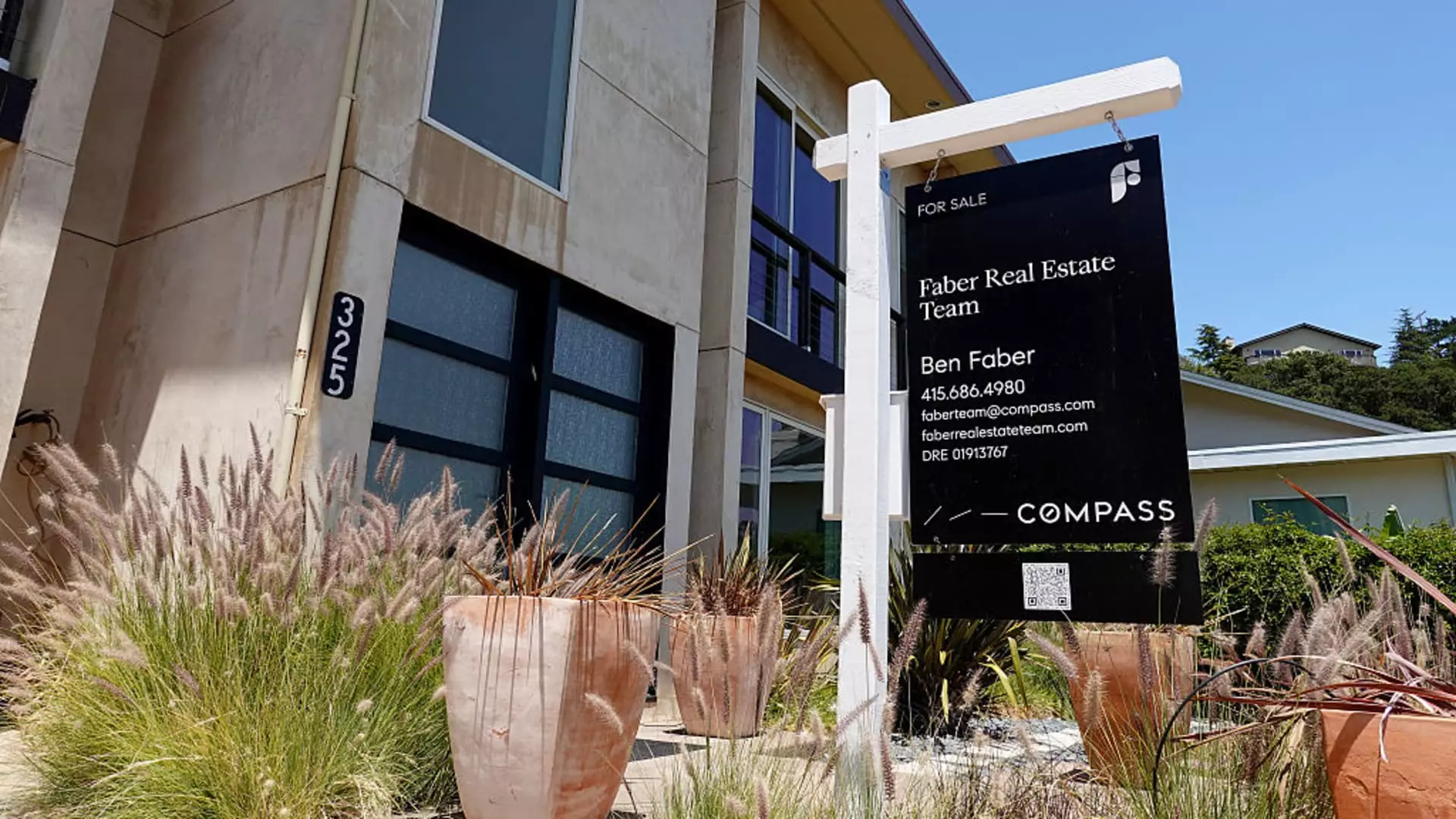In a market that once glittered with unchecked optimism, the U.S. housing industry is now experiencing a seismic shift, with home prices finally beginning to cool off. The latest S&P CoreLogic Case-Shiller Index reveals a mere 2.7% increase in national home prices for April, marking the smallest gain in nearly two years. This decline in growth from March’s 3.4%, combined with indicators from Parcl Labs showing stagnation in prices, suggests that the party is over for sellers who had hoped a return to rising prices was just around the corner.
This intensifying deceleration challenges the notion that real estate values are invulnerable to broader economic forces. The rising supply juxtaposed against weakening demand has pierced the bubble—one that was inflated by speculative fervor during the pandemic. The data chapter reveals that markets like New York and Chicago, which may have once seemed like mere footnotes to booming Sun Belt cities, are now taking the lead. This disruption signifies a maturation of the market where economically driven logic replaces the frenzied race towards inflated values. Contrary to the urban legends of limited inventory, the reality is gradually setting in: fresh listings are surfacing at a more rapid pace.
The Painful Truth of Mortgage Rates
One cannot discuss the current housing landscape without addressing the elephant in the room: mortgage rates. Having surged over 7% in April, the rates are now stabilized just below that grim threshold. This elevated cost of borrowing presents an insurmountable barrier for many potential buyers, especially first-time homeowners—historically the lifeblood of the housing market, now reduced to just 30% of May sales. Such figures starkly contrast the historical norm of 40%.
The irony is palpable: Those who hold onto their almost free, pandemic-era mortgage rates are disincentivized to list their homes, exacerbating the supply crisis even further. The report from Redfin indicates that only 6% of sellers face the specter of selling at a loss. While this statistic brings a morsel of comfort to some sellers, it paints a troubling picture of stagnation in an industry that requires a fresh influx of properties to maintain equilibrium.
Price Resilience or Precursors of Collapse?
Despite the cooling prices and stagnant demand, some industry analysts remain cautiously optimistic, suggesting that housing supply remains “severely constrained,” meaning the chances of a significant market collapse are slim. Yet this resilience may be misleading. A “price floor” can only prop up values for so long before underlying realities pull them down.
The language of “fundamentals” versus “speculative fervor” misses the larger point. Each housing cycle teaches us that prolonged stagnation can erode buyer confidence, and with it, the very foundation of home values. The psychology of potential buyers, shaped by uncertainty and economic fluctuations, suggests that the longer this cycle of supply and diminished demand drags on, the likelier we are to encounter not just softening prices but potentially severe corrections.
The New Territorial Map of the Housing Market
Geographically, the dynamics have shifted significantly. The pandemic-era champions—the Sun Belt cities—are no longer the crown jewels of real estate. Places like Tampa and Dallas have fallen back into negative territory, underscoring a critical lesson: Even the most beloved markets can fall from grace. It’s profoundly striking how markets in the Midwest and Northeast are gaining momentum—not simply by chance but through an evolutionary trajectory driven by employment stability and more affordable living.
While these shifts may bring joy to a segment of buyers and future homeowners, they also bring forth the stark realization that the once-celebrated trajectory of the American real estate market has lost its swagger. The imminent question looms large: Are we witnessing a necessary recalibration, or should we brace for a full-blown crisis?
In this evolving story of homes and values, the real estate industry finds itself at a critical crossroads. As we witness the regional shake-up and the subtle tightening of affordability, one is left to ponder: What will the next chapter of this narrative reveal? Can we hope for a balanced recovery, or are we merely delaying an inevitable reckoning? The answers may hinge on how quickly both buyers and sellers adapt to the new normal—a condition teetering precariously between resilience and peril.


Leave a Reply